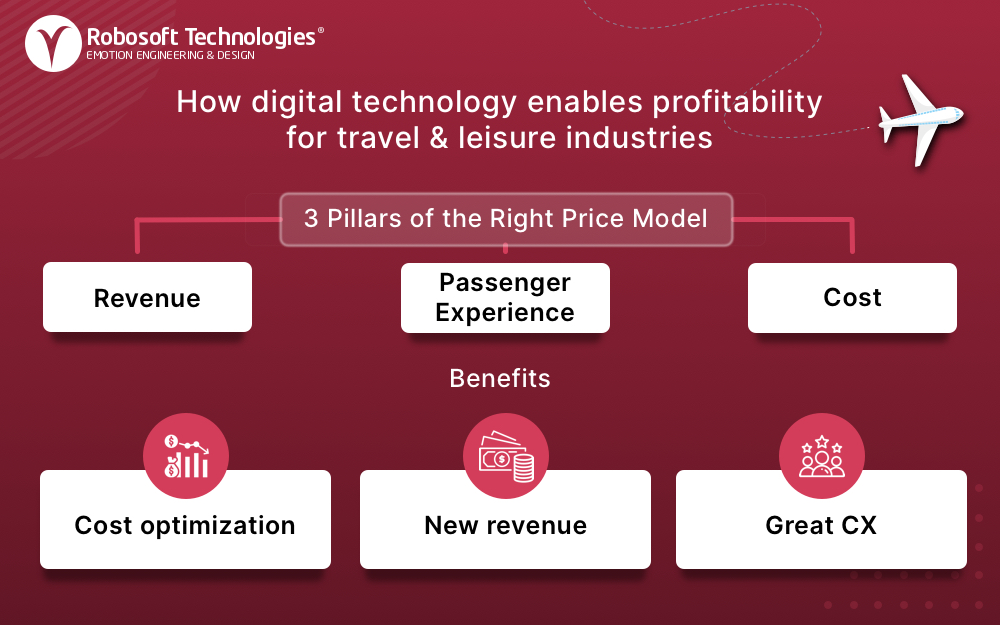The airline industry has always struggled with profitability – the lockdowns and travel restrictions imposed by the Covid-19 pandemic put them in even tighter shackles of debt, and labor challenges squeeze the margins further. Despite cutting operating costs by 35 percent compared to pre-crisis levels, airlines amassed a huge debt of over $650 billion that they need to recover. The rising prices of fuel, maintenance, and infrastructure pile up, especially with airports also looking to recover losses from airlines. Meanwhile, as airlines seek to make a comeback, they must make investments in employee welfare or competitive salaries. These accumulating costs take chunks out of the bottom line, which was already slim, to begin with.
International travel, the main source of revenue for airlines had come to a full stop during Covid-19. Even as vaccinations progress and countries open their borders, the road to recovery is slow. In 2021, overall travelers were only 47 percent as compared to 2019. Corporate travel may not go back to the glory days; the hybrid model of working is here to stay, so budgets will reduce. Leisure travel encourages the industry, but travelers remain cautious. IATA expects this to improve, recovering to 111% by 2025, but until then, airlines will find profitability a challenge, with multiple players competing for the smaller pool of travelers.
To increase profitability, airlines must critically examine the business model
To increase profitability, airlines must critically examine their business models. The post-Covid-19 scenario is an opportunity to re-imagine new models beyond the silos of low-cost, ultra-low-cost, and full service.
Low-cost travel is often conflated with low price but cost and price should be considered separately. LCCs tend to lower price by reducing frills and conveniences. This is an inconvenience to the passenger and back-fires in realizing the benefits of being a low-cost carrier. FSCs, on the other hand, charge a higher price to accommodate the services they offer. To retain the experience and yet offer a competitive pricing, they need to manage their costs.
Cost management and price determination should be separate activities. Lower cost should be an outcome of reimagined business processes, and increased efficiencies across the operations. Digital technologies hold the promise of lowering cost. Arriving at the pricing should be an analytical assessment of the common facilities and conveniences sought by travelers.
With data available, airlines can determine such conveniences and include them as standard ones in the base price. For instance, one can determine the number of bags most commonly carried in each sector, whether passengers have seat preferences, and other commonly required facilities and conveniences. Similarly, data can assist decisions related to seat selection, meals, and other parameters on whether to be included as standard or priced separately. Keeping customer experience as the prime factor in pricing decisions will result in better customer stickiness and make it the airline of first choice.
Introducing the Right Price Model founded on digital
With changing passenger preferences and the potential of data and technology, there arises a new model that can lower costs on one hand and arrive at the right pricing on the other – The Right Price Model.
The way forward for airlines or indeed any enterprise in the travel & leisure domain is not about low price or full service, but about getting the price right. Profitability lies in the Right Price Model – one which disrupts the traditional notions of FSCs and LCCs. In the Right Price Model, airlines can use the three pillars: revenue, passenger experience, and cost to arrive at the right price – one that ensures superior passenger experience and delivers profitability in the process – all anchored on data and technology.
Revenue – In addition to revenues from ticket sales, digital technologies can open new avenues of revenue generation as well as new ways of offering current services to generate alpha on the revenue. Airlines can adopt a broader strategic focus to monetize adjacent areas of customer convenience in the first and last mile, such as taxi or food delivery, parking, passenger assistance, etc. They can also provide a category of services that generates an alpha over the regular set of services, such as a redefined business class. Digital technology can be leveraged to create a configurable business class – based on the demand, available seats may be released for economy class or added to the business class. Physical differentiation on board can be created by moving the separators. The notion of business class can be redefined with digital and personalized services such as lounge access, priority boarding, SMS luggage tracking and alerts, and other similar digitally enabled services.
Passenger experience – Adopting a passenger-centric approach helps to create a competitive edge, and strengthen the brand, establishing strong emotional connections with the passenger. A digital-first approach with a pleasant look and feel, and easy discoverability helps overcome key emotional inhibitors, and short and easy booking journeys help convert users. The flying experience can be enhanced into a networking experience using digital technologies such as digital multi-player games, assistance, and notifications across the journey.
Airlines can also use data to optimize the experience for sets of passengers, based on the timeslots and routes. For example, if it is predominantly catering to tourists, then the experience can be customized for them.
Costs – Airlines need to optimize their operations to be lean, agile and efficient. For this, they can rely on digitalization of operations and automation of customer touchpoints using state-of-the art technologies like RPA, AI, ML, as well as interactive technology such as biometrics, virtual reality and apps. Not only does digitalization connect carriers to the customer’s expectations, but it is also the secret weapon behind the efficiency of operations. From ticket booking to route optimization, aircraft maintenance, or fleet management digitalization can help implement a lean operation resulting in cost savings, accuracy, and safety.
Digital technology enables a new model of profitability for airlines – The Right Price Model
Digital technologies play a role in optimizing operational costs, creating new revenue streams, and creating memorable passenger experiences. The past few years saw airlines increase their confidence in technology, successfully deploying contactless passenger processes from parking to check-in and luggage drop, tech-led security, and document processing. Automating workflows and enabling self-service through biometrics, chatbots, and virtual and augmented reality offers passengers a digital experience that delights them and reduces operating costs. In fact, SITA’s 2021 Air Transport IT Insights reports that CIOs are betting on technology to support the recovery, with planned IT spending on mobile-based services such as automating vaccination and health verifications, self-service, unassisted check-in, luggage tracking, boarding gate notifications, etc.

Digital can also be leveraged to improve customer experience and add new revenue. While the primary offering is flying, airline carriers can add revenue streams through a range of services along customers’ end-to-end journeys. Whether first-mile, in-flight, or last mile, digital assets, and technology systems can smooth customer touchpoints, automate processes and facilitate new revenue streams. Once mapped out, they can be leaned on to make the services complimentary, enhance customer happiness, or deploy them as part of personalization campaigns. These services can be built into the price, based on data-led scenarios around the customer or managed as additional add-on paid services.
Creating a new path to profitability, paved with passenger delight
Firmly on the route to recovery, International Air Transport Association (IATA) predicts that passenger numbers will reach 4.0 billion in 2024, exceeding pre-pandemic levels by 103% from 2019. This is a good time for carriers to study macro-trends and add digitalize their processes or use the potential of data and analytics to inform them about customer preferences.
Digitalization is a path for airlines that has solutions on every aspect of the business, whether cost optimization, passenger experience, or pricing and route planning.
Digitalization can automate passenger experiences to reduce the dependency on staff, streamline their own operations and reduce costs. Artificial intelligence (AI) and machine learning (ML) can play a strong role in determining pricing strategies, and with an agile operation, these strategies can also support changes in travel preferences. Airlines can also deploy technology to fulfil sustainability goals to arrive at data-driven flight paths and fuel efficiency.
With high-tech, the age of low-cost and full-service may have come to an end – the time is right for airlines to now move to the Right Price Model. Enabled by digital technology, airlines can now re-shape the economics of the industry, and re-invent the passenger experience to form a new path to profitability.





